All products featured are independently chosen by us. However, SoundGuys may receive a commission on orders placed through its retail links. See our ethics statement.
Can headphones be sustainable?

The world needs to make significant progress towards cutting carbon emissions. Some companies have decided to become part of the solution, including manufacturers of audio products. But are their efforts ambitious enough?
We reviewed the sustainability reports of Apple, Amazon, Bose, and Sony to understand what they’ve committed to and how they’re planning to achieve their goals. To help us dig through hundreds of pages of sustainability reports, we enlisted the help of a professional. Batool Banihani, an LCA Manager at Green Story, has been working on sustainability reports for several years.
Editor’s note: This post was updated on November 14, 2022 to include more current information on companies’ sustainability efforts.
What does sustainability mean?
Sustainability is primarily about humanity and our continued survival on planet Earth. Humans need suitable economic and social conditions to thrive, but being part of nature ourselves, we also require an intact environment to survive. Hence, sustainability is often described as laying at the intersection of stable economic, social, and environmental conditions.
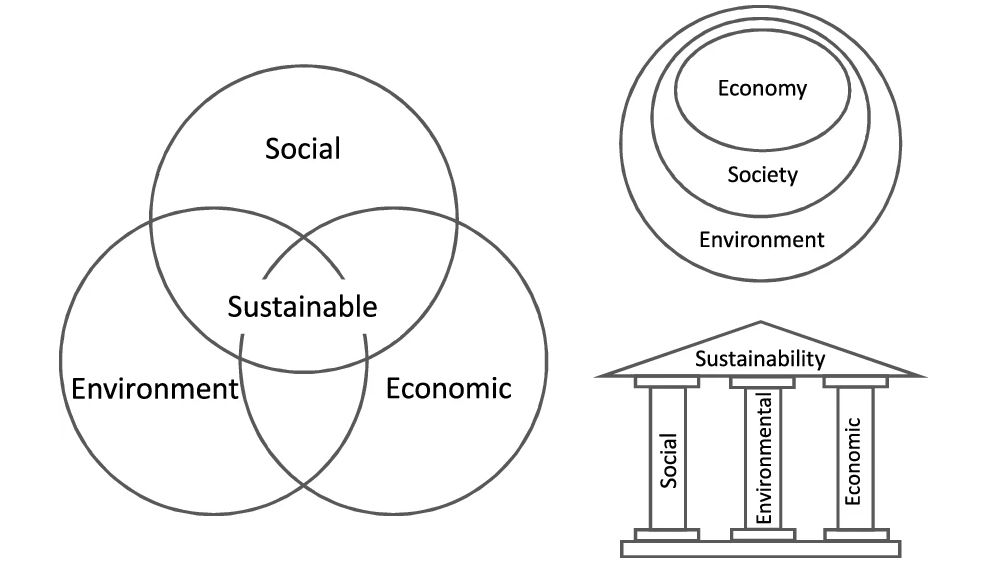
For over 200 years, humans have been systematically degrading ecosystems, often negatively affecting social and economic stability. We’ve known about the potentially devastating consequences of that for at least 50 years. In 1972, the Club of Rome published its groundbreaking report The Limits to Growth, which provides comprehensive computer simulations that predict the impact of human systems on our planet.
While not all of its predictions were accurate, The Limits to Growth gave rise to the idea of sustainable development. In 1987, the United Nations’ Brundtland Commission offered a simple definition in its report Our Common Future:
Sustainable development is development that meets the needs of the present without compromising the ability of future generations to meet their own needs.
Humanity is still struggling to achieve sustainable development, but we’re slowly waking up to the reality that we can’t carry on with business as usual.
How many emissions are sustainable?
In 2015, at the UN’s 21st Conference of the Parties (COP21) meeting, over 190 countries signed The Paris Agreement. The legally binding international treaty on climate change obligates the signatories “to limit global warming to well below 2, preferably to 1.5 degrees Celsius, compared to pre-industrial levels.” The agreement was built on decades of climate science and assessments by the Intergovernmental Panel on Climate Change (IPCC), a politically independent authority established in 1988 that advises governments on potential outcomes and targets. In its special report, Global Warming of 1.5°C, the IPCC estimated that bringing global emissions down to net-zero carbon emissions by 2050 was sufficient to maintain the 1.5 degrees Celsius goal.
| Lingo | What it means |
|---|---|
Carbon equivalents | Different greenhouse gases have different impacts on the climate. Carbon equivalents make it possible to compare and sum up the total impact. For example, releasing 1 kg of methane (CH4) into the atmosphere is equivalent to releasing 84 kg of CO2. |
Carbon neutral | Any CO2 released into the atmosphere due to a company's activities is balanced or offset by removing CO2 elsewhere. |
Carbon offsetting | Removing carbon from the atmosphere using accredited or licensed solutions, such as planting trees. |
Net-zero carbon emissions | Similar to carbon neutral, except the emphasis is on reducing emissions to as close to zero as possible, then offsetting remaining emissions. |
Scope 1, 2, and 3 carbon emissions | Scope 1 carbon emissions result directly from the reporting company's operations, such as running its facilities or vehicles. Scope 2 emissions include indirect emissions, such as electricity, heating, or cooling for the company's own use. Scope 3 includes everything else upstream or downstream of the reporting company, for example purchased capital goods (upstream) or product distribution (downstream). |
In the meantime, the average global temperature has risen by at least one degree Celsius since the pre-industrial era. And with global emissions still rapidly increasing, the IPCC updated its models. The pandemic did not curb global carbon emissions by much, and we’ve been bouncing back hard.
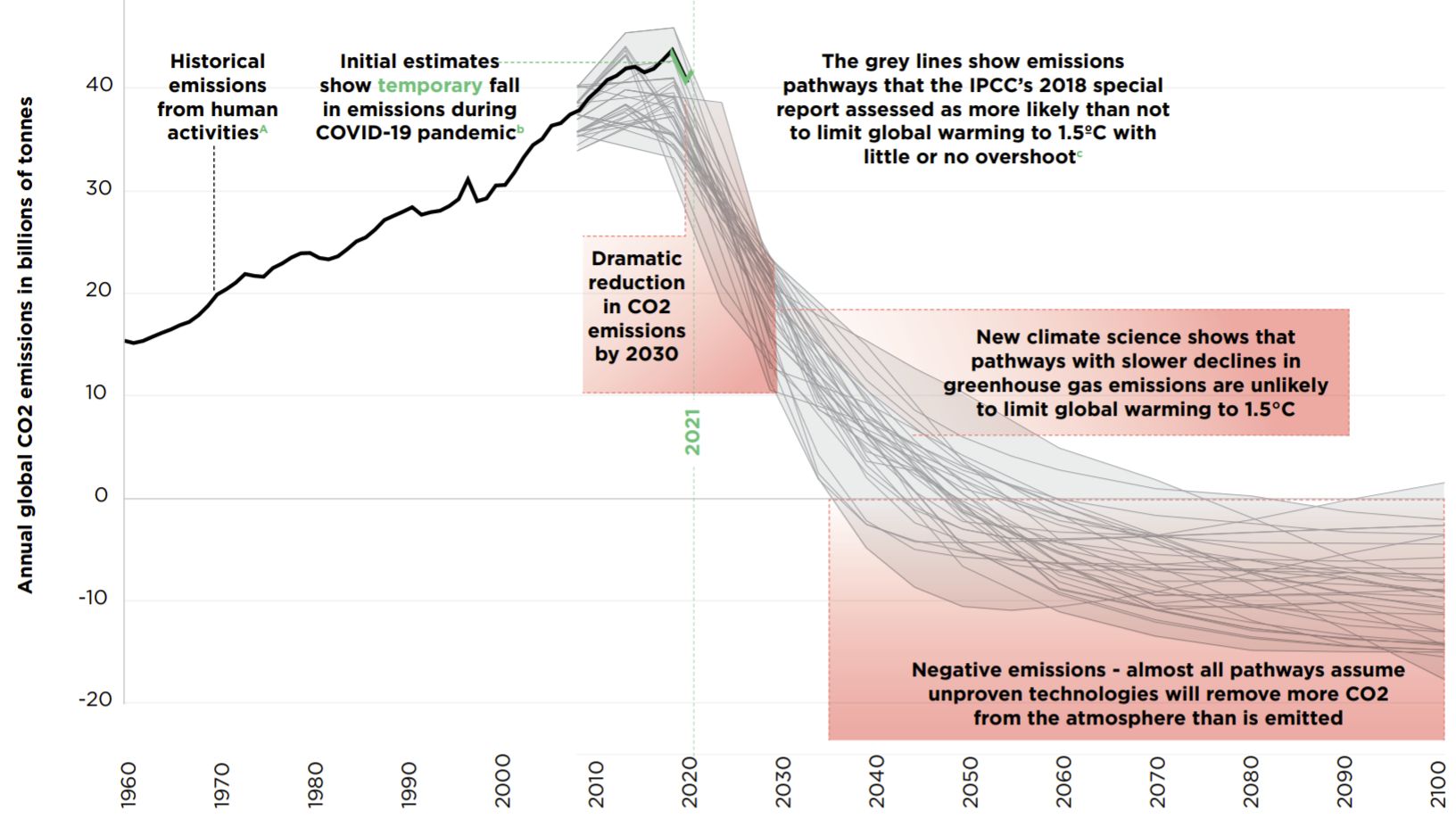
According to the Climate Crisis Advisory Group (CCAG), achieving net-zero carbon emissions by 2050 isn’t enough anymore. Based on the 2018 IPCC report, most pathways for global CO2 emissions thought to limit global warming to 1.5 degrees Celsius assume negative carbon emissions, as in net carbon removal from the atmosphere. This timeline has been steadily moving forward from 2050 and is now firmly in the 2030 range, which is unsettlingly soon.
In 2021, the UN stated that based on current governmental climate action plans, we could expect a temperature rise of about 2.7 degrees Celsius by the end of the century. Just ahead of COP27 in Egypt in November 2022, a new UN Climate Change report shows that while countries are making progress towards fulfilling their pledges from the Paris Agreement, the pace remains insufficient and the world is still heading for a 2.5 degrees Celsius warming by the end of the century.
We are still nowhere near the scale and pace of emission reductions required to put us on track toward a 1.5 degrees Celsius world. –Simon Stiell, Executive Secretary of UN Climate Change
Social awareness is mounting, and it’s clear that governments alone can’t stop climate change.
How do audio products affect sustainability?
Every speaker, headphone, and earbud is made from a variety of materials (metals, various plastics, wood, leather, fabrics, and more). The rechargeable lithium-ion battery—a standard component in portable electronics—contains up to seven different metals, as well as organic solvents and synthetic polymers. Each material has its own supply chain, starting with a mining operation, oil production, logging, or another form of harvesting resources.

Many companies still think of supply chains as linear systems, starting with the production and procurement of raw materials and ending with the sale of a product. However, what you can’t gather from a standard supply chain depiction is the damage it does to the environment, what happens with the waste and the emissions produced along the way, or how it affects workers and communities. What’s more, the impact and lifecycle of a product don’t end once it’s sold. The product might continue to produce emissions (i.e., through electricity use) and eventually, it becomes waste itself.
Linear supply chains are inherently unsustainable because the supply of non-renewable resources like crude oil and many metals is finite. Likewise, as we’ve covered above, our planet doesn’t have unlimited capacity to absorb carbon emissions or waste—the limits to growth are real.
Consequently, companies like Sony and Apple have started to rethink their supply chains. They’re increasingly switching from virgin to recycled resources, slowly moving towards a circular economy. At the same time, they’re taking responsibility for the destruction, waste, and carbon emissions caused by their supply chains, aiming for a carbon-neutral economy. Finally, they’re addressing the safety and well-being of the people involved in making their products.
These companies document their objectives and achievements in sustainability reports.
What is the purpose of sustainability reporting?
A sustainability report is a communication tool, a systematic presentation of an organization’s efforts towards becoming more sustainable. K. A. Muhammed Thaslim and Aksa Rose Antony summarize it like this:
A sustainability report, a key platform for communicating sustainability performance and impacts, presents the organization’s values and governance model, and demonstrates the link between its strategy and its commitment to a sustainable global economy. Further, it helps the organization to measure and understand its economic, environmental, social, and governance performance, and then set goals and manage change more effectively.
In the US, sustainability reporting is a largely voluntary exercise with no universal standard, yet many companies do it. Sony issued its first environmental report in 1994, and Apple has released environmental progress reports since 2008, while Amazon and Bose didn’t get started with sustainability reporting until 2017. Meanwhile, the EU’s Non-Financial Reporting Directive, launched in 2014, requires companies of 500 employees or more to report on environmental and social matters.
In the past, what commonly drew a company into sustainability reporting was public criticism of its operations. The first environmental reports date back to the late 1980s, when the chemical industry was under pressure from non-governmental organizations (NGOs). Early reports were often marketing propaganda, but they inspired environmental management systems and reporting standards.

Companies now have access to a variety of frameworks and standards to structure their sustainability reports. Many of the standards are overlapping, none are comprehensive, and not all are suitable for every industry. That’s why many companies, especially those offering a wide selection of products and services, use multiple frameworks. To Banihani, the sustainability expert we consulted, that’s a good thing.
“Standards complement each other,” She said. “Companies have to report more and I would very much prefer them to use multiple standards.”
However, much of sustainability reporting is voluntary and unregulated, which means companies are free to choose what they report on, and how they go about reporting. Like the reports themselves, audits and assessments are voluntary, too. All of this makes sustainability reports hard to compare and difficult to verify.
| Framework | Focus | Usage |
|---|---|---|
| Framework Global Reporting Initiative (GRI) reporting framework | Focus The GRI framework facilitates reporting on organizational impact on the economy, the environment, and people. In 2016, it incorporated references to the SDGs (see below). | Usage This is one of the most widely used frameworks. A study by Workdesign found that an accumulative 69% of companies reported to the GRI in 2020. |
| Framework Sustainability Accounting Standards Board (SASB) Standards | Focus The SASB Standards allow businesses in 77 different industries to report on environmental, social, and governance (ESG) issues relevant to financial performance. The target audience for the data reported using these standards are investors. | Usage In 2020, over 500 companies reported using SASB Standards. In 2021, the number almost doubled. |
| Framework Sustainable Development Goals (SDGs) | Focus The SDGs are a set of 17 goals, each with a number of targets, set forward by the United Nations, to be achieved by the year 2030. The goals touch on a broad range of social, economic, and environmental issues, all meant to guide us into a more sustainable future. | Usage According to Workdesign, 97% of companies in their sample reported to the SDGs in their 2020 sustainability reports. |
| Framework Task Force on Climate-Related Financial Disclosures (TCFD) | Focus The TCFD framework is a tool to disclose an organization's climate-related financial risks and opportunities within its existing reporting process. The key audiences for the information communicated through this framework are investors, lenders, and insurance underwriters. | Usage The first set of TCFD recommendations were released in 2017. TCFD reported over 1,000 supporters globally in 2020. |
| Framework United Nations Sustainable Development Group (UNGP) | Focus Human rights are at the core of the UNGP reporting framework. Through a series of questions, organizations can disclose how they commit to human rights and address salient human rights issues. | Usage According to UNGP, "over 80 companies use the UNGP reporting framework for public reporting and/or internal management." |
Organizations have at least three reasons to be transparent and ambitious in their sustainability reporting:
- Stakeholder Accountability: Stakeholders can hold them accountable for their year-over-year reporting. Lackluster, misleading, or false reporting, once uncovered, is way more than a PR disaster. Poor reporting is a business liability. It can have wide-reaching consequences when stakeholders withdraw their support, such as investments, access to insurance, or consumer trust.
- Mandatory Reporting: Reporting on sustainability standards will eventually become mandatory. Companies that haven’t established reporting routines and metrics will be at a competitive disadvantage when that happens. On the flip side, being a leader in the field and setting new sustainability performance standards will yield a competitive advantage when mandatory standards are put into place.
- Lobbying for Stricter Standards: Companies that integrate ambitious sustainability reporting can leverage their leadership role and lobby for stricter standards that they can easily fulfill. Sustainability then becomes a race, which could be good for business and the planet.
Can you trust sustainability reporting?

When companies publish a sustainability report, we all want to believe they have humanity’s best interest at heart. That may be true, but first and foremost, a sustainability report is a communication tool meant to build trust with the company’s stakeholders. That’s you, the consumer, but also shareholders, investors, regulators, advocacy groups, and other business partners. Each company serves multiple interests.
Profit remains business’ biggest driver, even in sustainability, because without making money, no company can survive. Not every company that reports on sustainability automatically deserves your trust. While a company won’t be able to mislead its stakeholders for long, some may exaggerate their efforts or hide shortcomings behind a smokescreen of good initiatives.
Sustainability reporting is a marketing tool that can drive change.
To some degree, the trustworthiness of a report is also reflected in its design. While some companies create a sustainability department to do what’s needed to satisfy a set of standards, others go above and beyond in reporting to the highest standards available, possibly even creating custom standards, and integrating sustainability at every level of the organization. Often, it’s a process and every company has to start somewhere.

Banihani told us about one possible approach to sustainability reporting. One of her clients asked her to create a competitor analysis to help them see how their sustainability portfolio compares. She mapped out the 10 most common subjects across 10 competitors, then she analyzed each report for the quality of disclosure. She paid attention to things like whether the company disclosed its managerial approach, if policies are in place and publicized, and if it disclosed risks and contingency plans, among others. Her results then informed the depth of her client’s sustainability reporting.
Banihani’s bottom line is that a company’s sustainability has less to do with perfect numbers and more to do with disclosing real numbers. It’s important that a headphone manufacturer backs its pledge with actionable commitments to improve its environmental and social impact. And once a company has started on the road to sustainability, it can only make progress.
How do sustainability reports compare?
Comparing sustainability reports is difficult, even in one industry, according to Banihani. Companies are free to use any combination of standards and frameworks, and they can present the information however it suits them. As a result, you’ll find a massive number of different reporting styles, even for the same sustainability reporting framework.
Banihani explains that the differences can be as simple as using various metric units or percentages vs concrete numbers. It gets more complicated when you try to compare a global company that covers multiple niches like Amazon, with one that only operates in a handful of markets or focuses on a single niche like Bose. However, we can learn how ambitious and committed a company is and whether its goals are realistic by looking at a variety of sustainability reports.
To give you a taste, we’re comparing the manufacturers of the most popular audio products on the market today: Apple, Amazon, Bose, and Sony. While this comparison is neither comprehensive nor entirely fair—because we’re comparing vastly different companies—it highlights the complexity of sustainability reporting.
| Amazon | Apple | Bose | Sony | |
|---|---|---|---|---|
Report Year | Amazon 2021 | Apple 2022 | Bose 2021/2022 | Sony 2022 |
Report scope | Amazon Environment, Society, Governance | Apple Climate Change, Resources, Smarter Chemistry, Engagement | Bose Product Sustainability, Environmental Initiatives, Our People, Our Communities | Sony Corporate Governance, Ethics and Compliance, Respect for Human Rights, Technology, Employees, Environment, Responsible Supply Chain, Quality and Customer Service, Community Engagement |
Report length | Amazon 79 pages + appendices | Apple 81 pages + appendix | Bose 40 pages + GRI Index | Sony 127 pages + data, GRI content index, and numerous cross-references to additional data and papers |
Frameworks and standards | Amazon SASB, SDGs, TCFC, UNGP | Apple GRI, SASB, TCFD | Bose GRI | Sony GRI, SASB, SDGs, TCFD |
Carbon footprint | Amazon 71.54 million metric tons CO2e Scopes 1 through 3 | Apple 23.2 million metric tons CO2e Scopes 1 through 3 | Bose 17.1 tonnes of CO2e (2022) Scopes 1 and 2 | Sony 17.36 million tons Scopes 1 through 3 |
Carbon goals | Amazon Net-zero carbon by 2040 | Apple Carbon neutral for entire carbon footprint by 2030 Create products with net zero carbon impact by 2030 | Bose No public targets | Sony Scope 1 and 2 emissions carbon neutral by 2030, 45% reduction of Scope 3 GHG emissions by 2035, net zero emissions for Scopes 1 through 3 by 2040, zero environmental footprint thereafter |
Carbon progress | Amazon 18% increase in 2021 1.9% carbon intensity decrease in 2021 | Apple 40% decrease since 2015 Net emissions remained the same compared to 2021 | Bose 3% decrease from 2021 to 2022 | Sony GHG emissions from sites up 8.4% compared to fiscal year 2020 |
Report audits and certifications | Amazon Independent auditor not disclosed, previously Apex | Apple Apex Fraunhofer ISO 14001 | Bose Not disclosed | Sony Bureau Veritas Group ISO 14001 |
To really vet a company’s sustainability report, you have to understand what it’s reporting, as well as whether it has met its goals or how it has progressed year over year. It also helps to understand the specific lingo used in these reports.
We can’t provide a full analysis here, but we can highlight a few points that stood out to us.
What’s in the Amazon Sustainability Report?
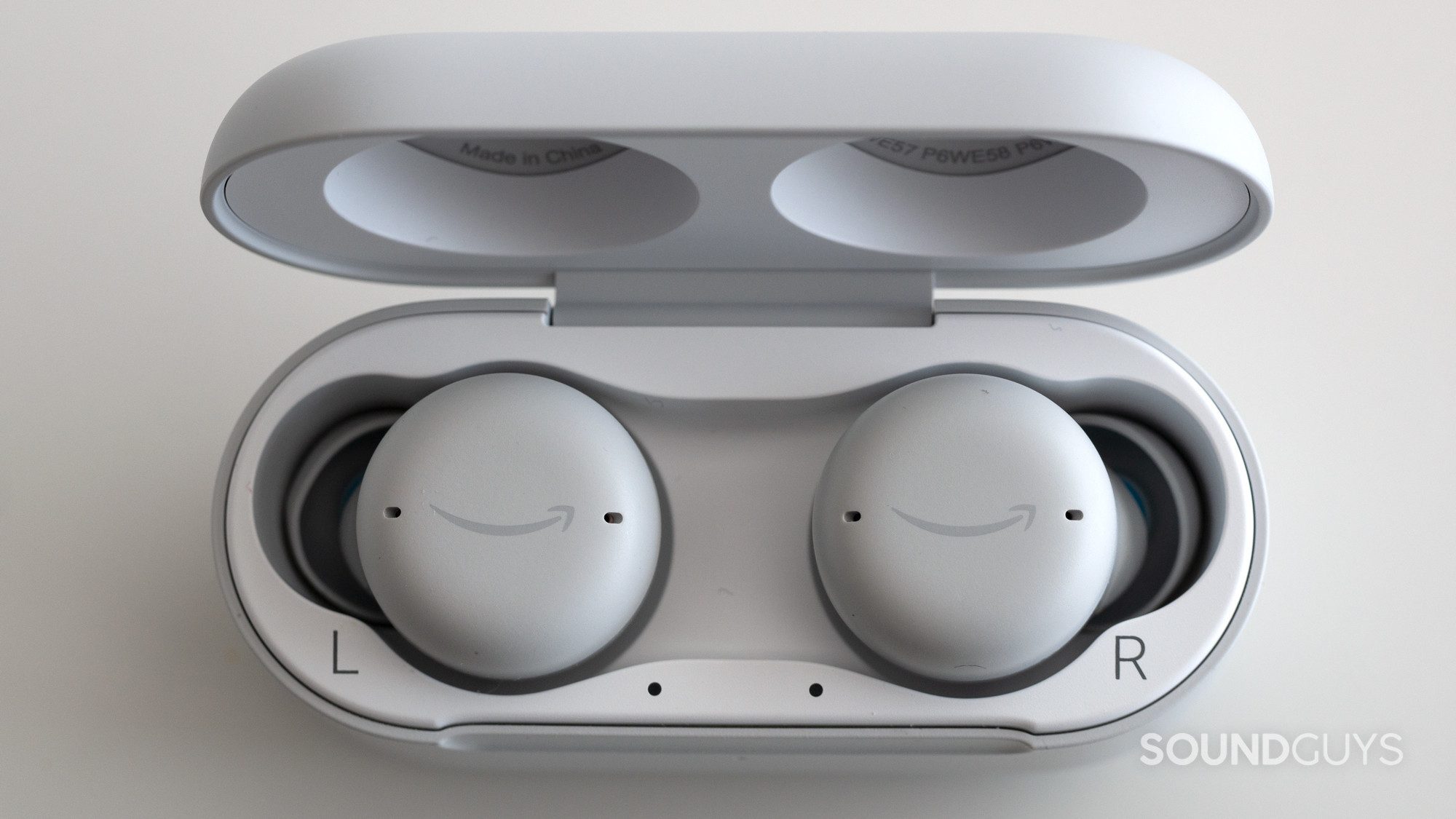
Amazon is only a few years into sustainability reporting, yet it presents ambitious goals. Among the highlights are 100% renewable energy by 2025, net-zero carbon for 50% of all shipments by 2030, and reaching net-zero carbon emissions across their entire operations by 2040. However, Banihani points out that Amazon’s report lacks a clear roadmap to achieving these lofty goals.
The large numbers in Amazon’s reports are impressive, but they feel a little vague without being put in perspective. For example, when the company boasts about having acquired 100,000 custom electric delivery vehicles, that sounds like a lot, but what percentage of its fleet does that represent? And how far along the way of achieving its goal of making half of its shipments net-zero carbon by 2030 does that take the company. Without insider knowledge (or greater transparency), it’s tough to know what progress the company has made. Amazon didn’t clarify when we asked.
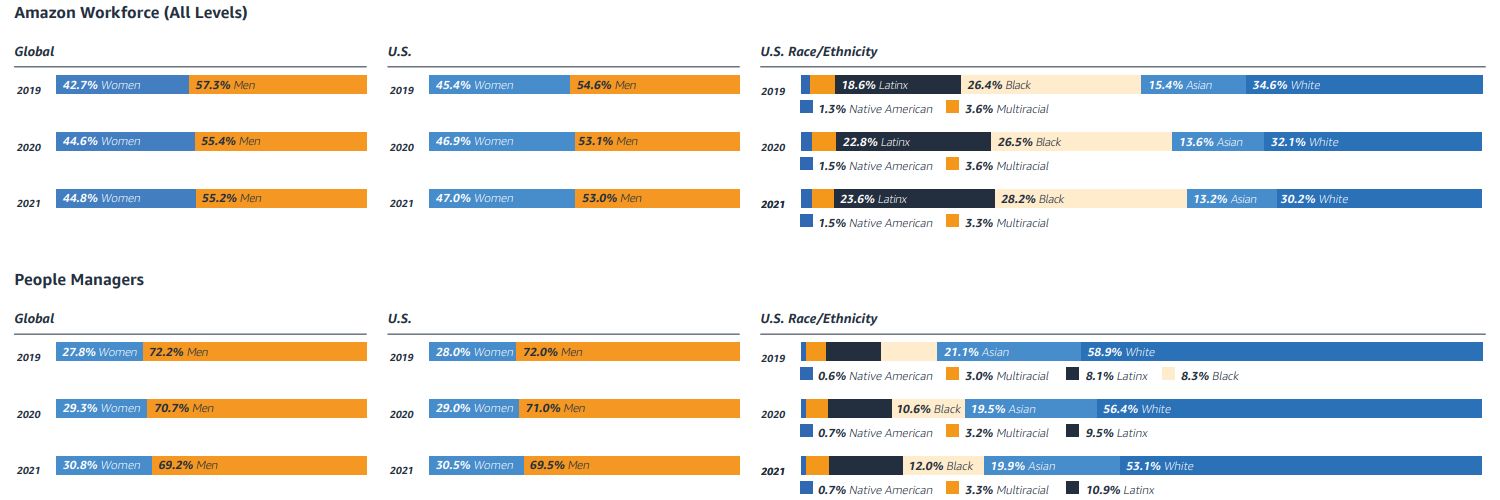
We appreciate how Amazon’s sustainability report embraces the full spectrum of sustainability, and addresses both the environment and the people involved in its operations. You could see this as a direct response to the relentless negative news coverage Amazon has received over the years. Consequently, Amazon is not afraid to report to the SDGs.
However, for as encouraging as Amazon’s report could be, it still concludes with this sentence:
The standards of measurement and performance contained in the report are developing and based on assumptions, and no assurance can be given that any plan, initiative, projection, goal, commitment, expectation, or prospect set forth in this report can or will be achieved.
No other company reviewed here felt the need to include anything of the like.
On the other hand, Amazon co-founded The Climate Pledge in 2019. Companies joining this initiative commit to achieving net-zero carbon emissions by 2040. It’s a bold step in the right direction, but not quite as bold as our next candidate.
What’s in the Apple Environmental Progress Report?
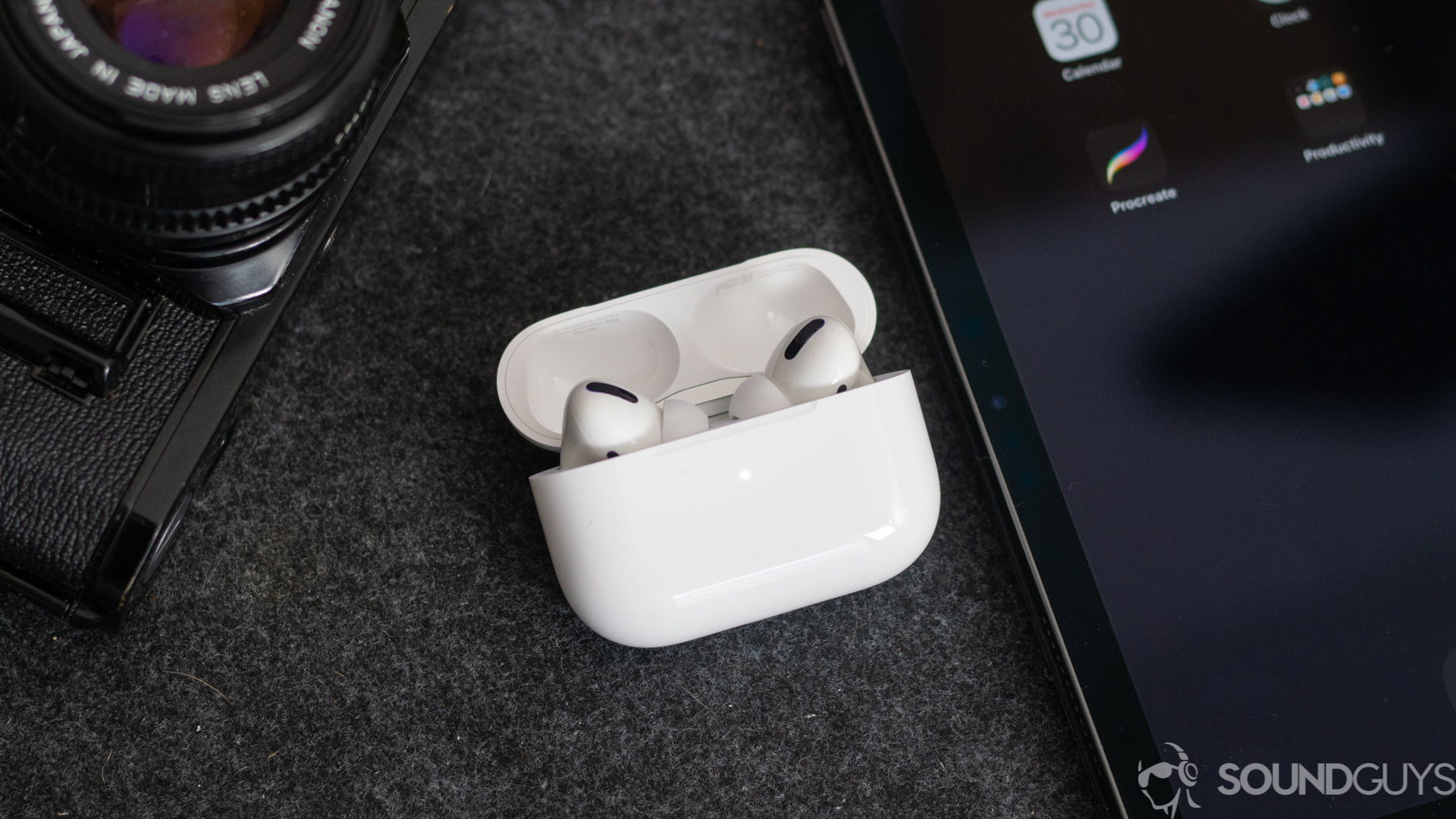
Apple’s environmental progress report is comprehensive and by far the most ambitious of the ones we cover in this article. The goals are straightforward and close to perfect, and the company has already made incredible progress.
In the climate change category, Apple strives to become carbon neutral for its entire carbon footprint by 2030, and to create products with a net-zero carbon impact by 2030. Based on its achievements so far, Apple is nearly halfway there. In fact, its corporate operations have been carbon neutral since 2020, sourcing 100% renewable electricity and securing carbon offsets for its corporate remaining emissions.
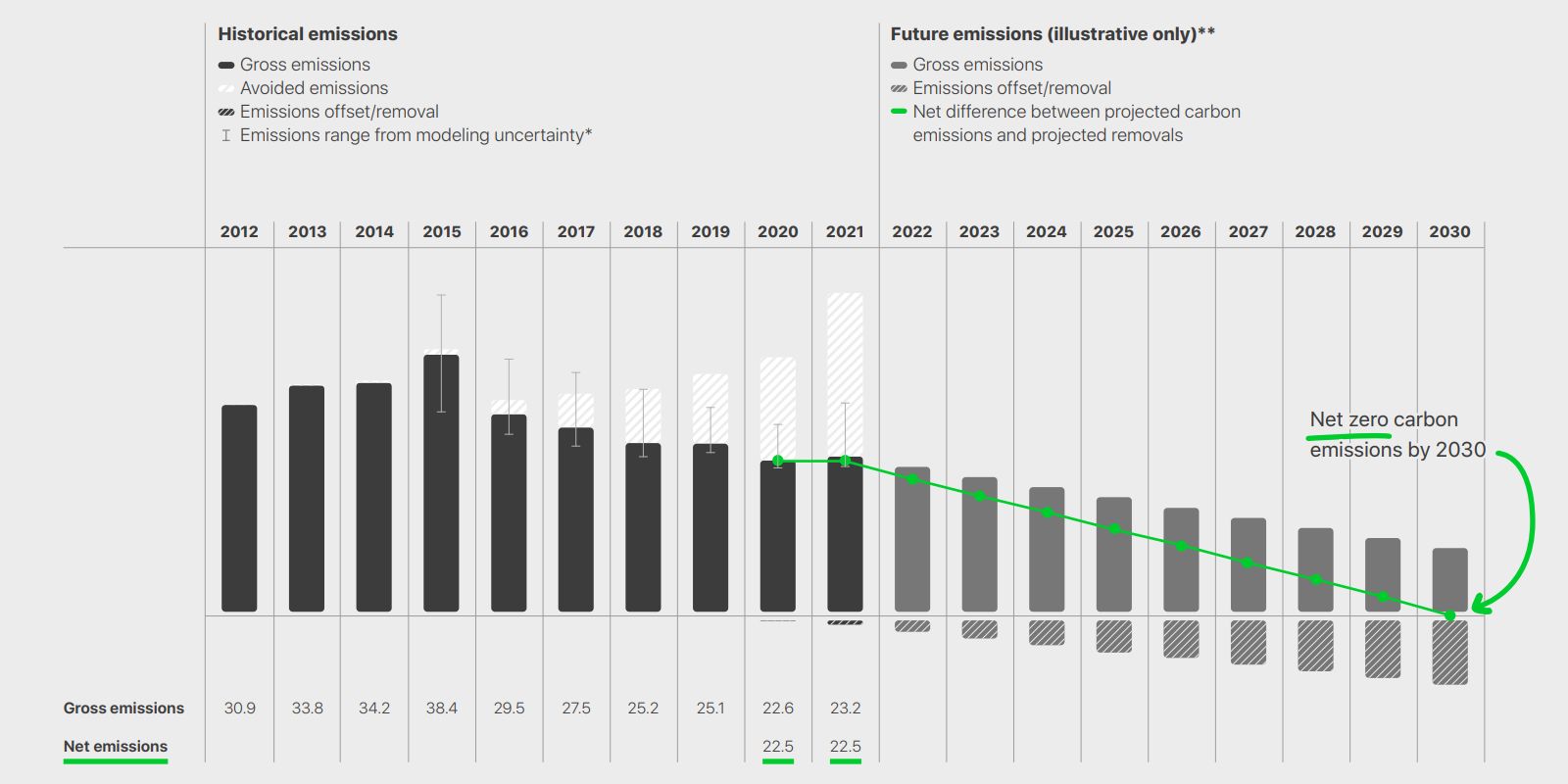
Frankly, we were surprised by Apple’s commitment to sustainability, and half-expected our expert to poke holes in the company’s progress report—but that didn’t happen.
Banihani notes how Apple doesn’t simply employ different frameworks—it also integrates them into its unified report. While Apple addressed all the TCFD requirements, it did so within its own report structure, which is arguably stronger than what the TCFD prescribes.
Apple is reporting not only on its own impact but has committed to Scope 3 reporting, which includes emissions that result from activities upstream and downstream of its operations. Consequently, Apple continues to use its impact so that its entire supply chain (upstream activities) follows its leadership, such as committing to 100% renewable energy.
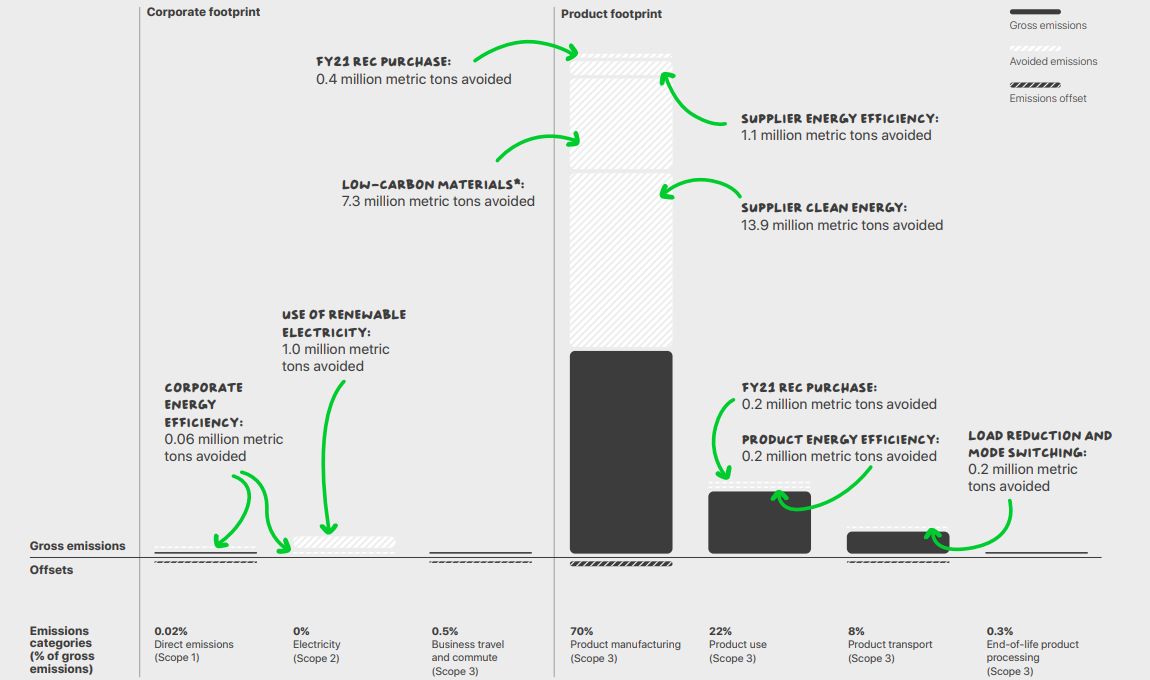
Furthermore, Apple employs low-carbon design, supports the Circular Economy, and invests in recycling, which addresses the downstream impacts of its products. I can’t wait to see how that will affect the repairability and recyclability of the AirPods and other Apple products.
Apple is laser-focused on eliminating negative impacts and doing its part to halt climate change, all within the limits of concrete environmental targets. Apple embraces social initiatives and has set clear workplace safety requirements for its suppliers. However, its reports to standards that address social aspects of sustainability, such as occupational health and safety or human rights, remain limited.
Apple is way ahead of everyone else in the environmental department. If it decides to use its lobbying power, this could turn into a serious challenge for smaller competitors that are only just starting to embrace sustainability.
What’s in the Bose Sustainability Report?
Bose issued its first sustainability report in 2017 and has committed to publishing a new report every two years. In its initial report, Bose set clear manufacturing and sustainability goals for the fiscal year of 2020 (FY20). The company achieved two of its goals in 2019, including a reduction of energy consumption by 6% per unit produced at its Tijuana production facility which, as Bose told us, accounts for over 50% of its total Scope 1 and 2 footprint.
By 2021, Bose had further decreased its energy use and carbon emissions. While 2022 saw an increase in energy use at Bose facilities due to a colder winter, carbon emissions dropped further.
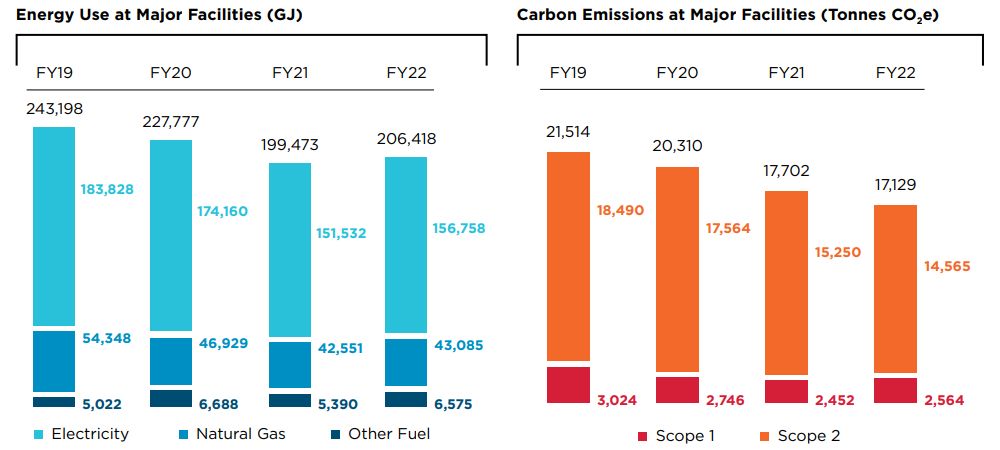
At this point, Bose isn’t reporting Scope 3, which indicates supply chain emissions. In Bose’s defense, Scope 3 emissions are controversial. Banihani explains that if every company on the planet accounted for its own Scope 1 and 2 emissions, Scope 3 emissions would already be accounted for.
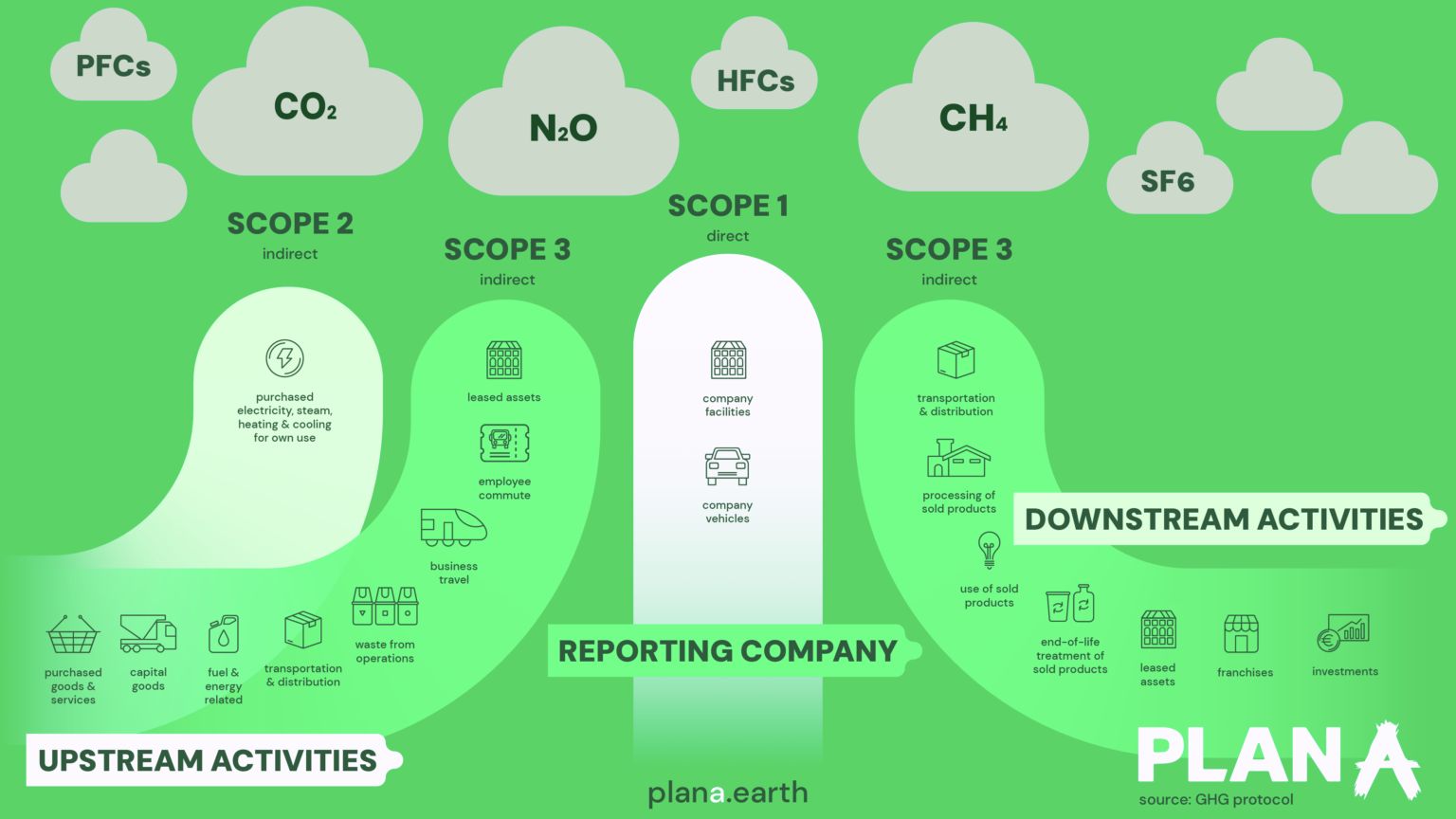
In its 2021 sustainability report, the company hadn’t set new sustainability goals. Instead, Bose completed a new materiality assessment that identified topics with the biggest impact on the company’s sustainability efforts. The topics most important to the business and its stakeholders include business ethics and compliance, the circular economy, inclusion, equity, and diversity, as well as a responsible supply chain. The company’s 2022 environmental, social, governance report, which reports on the progress since last year, doesn’t touch on these new topics, yet.
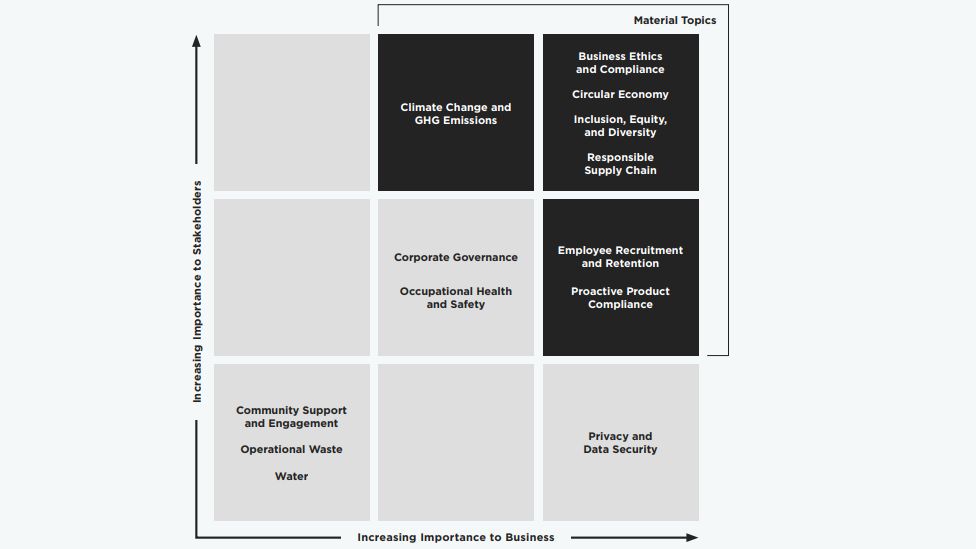
Joanne Berthiaume of Bose explains:
We’re in the process of establishing our new goals and don’t have specific details to provide. However, we can share that the new goals, once completed, will reflect our commitment to sustainability, support the global effort to avoid impacts from climate change, and drive tangible benefits across our value chain. [The updated materiality assessment] is now being used as a critical input as we reset our strategy and develop new goals that will guide our actions over the coming years.
While Bose’s report features stellar storytelling and many success stories, the company’s sustainability goals are nowhere near as ambitious as those of some of its competitors. Not only has Apple set out to become carbon neutral or even carbon negative, but it also has a clear pathway to achieving its goals. Meanwhile, Bose remains loosely committed:
Inspired by company leadership and informed by a newly updated materiality assessment, we plan to reevaluate our sustainability strategy and set new goals to ensure our actions continue to align with our business strategy and our stakeholders’ needs and values.
What’s in the Sony Sustainability Report?

Sony is a veteran in sustainability reporting and its comprehensive report reflects that. No other company we reviewed provided a comparable level of detail.
Banihani notes that a 200-page report loses the sustainability focus. And the report is actually much longer since it links to numerous other data collections and papers. Banihani’s criticism is certainly true if you view a sustainability report as a communication tool, but we’re still impressed with the thoroughness Sony is demonstrating. While it makes it hard to wrap your head around it, this report leaves almost no questions open.
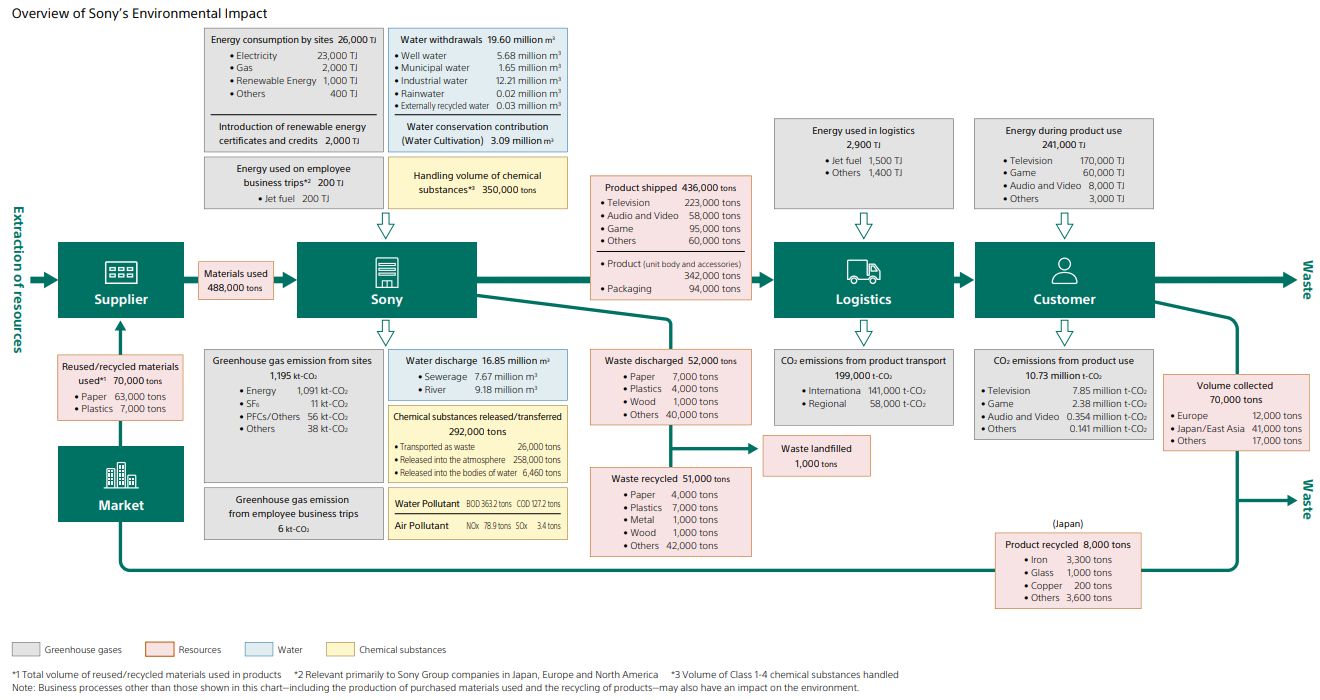
To date, Sony has more than halved the energy consumption of its products (compared with FY13) and reduced its greenhouse gas emissions by 11% (compared to FY15). In these and many other cases, Sony overachieved its goals. Still, the company also documented missed targets, such as its goal to reduce the use of virgin, oil-based plastics. Other sustainability reports might hide the fact that a company missed a target, but Sony appears committed to full transparency.
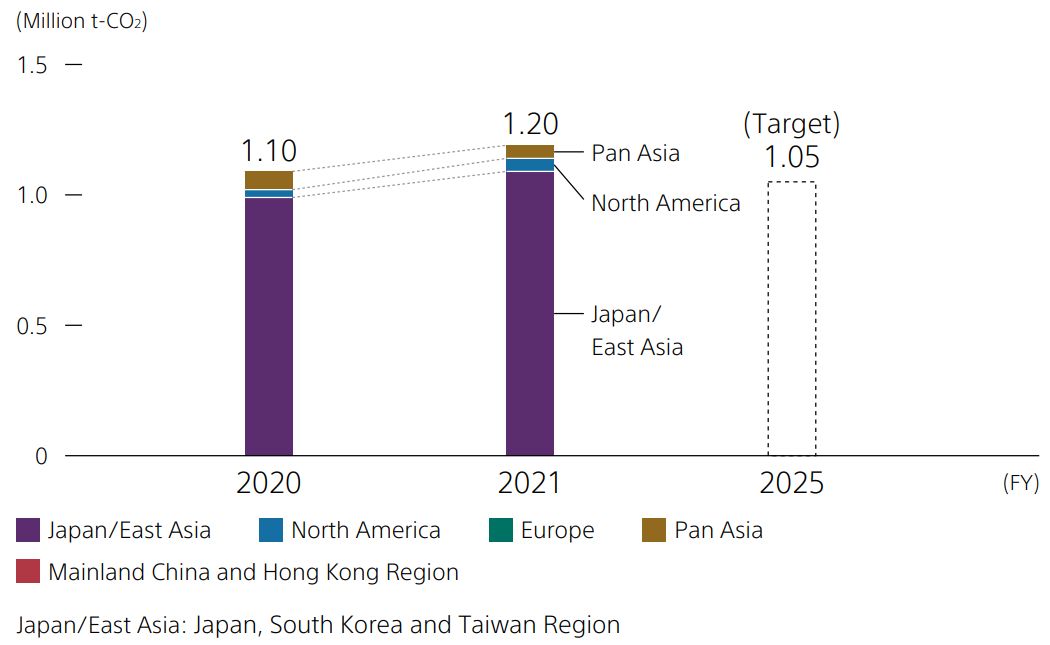
In 2021, Sony told us it’s been on the “Road to Zero” since 2010, and aims to achieve a zero environmental footprint throughout the life cycle of its products and business activities by 2050. Meanwhile, Sony has set more ambitious targets, vowing to reach a zero environmental footprint by 2040 and achieve 100% renewal energy by 2030 (previously 2040). This is remarkable, but what motivated the company to change its road map?
Sony works with the Science Based Targets (SBTi) initiative to achieve its goals. SBTi tightened its targets, now aiming to curb a global temperature rise at 1.5 degrees Celsius, rather than 2 degrees Celsius. Consequently, Sony adjusted its own targets to align with SBTi.
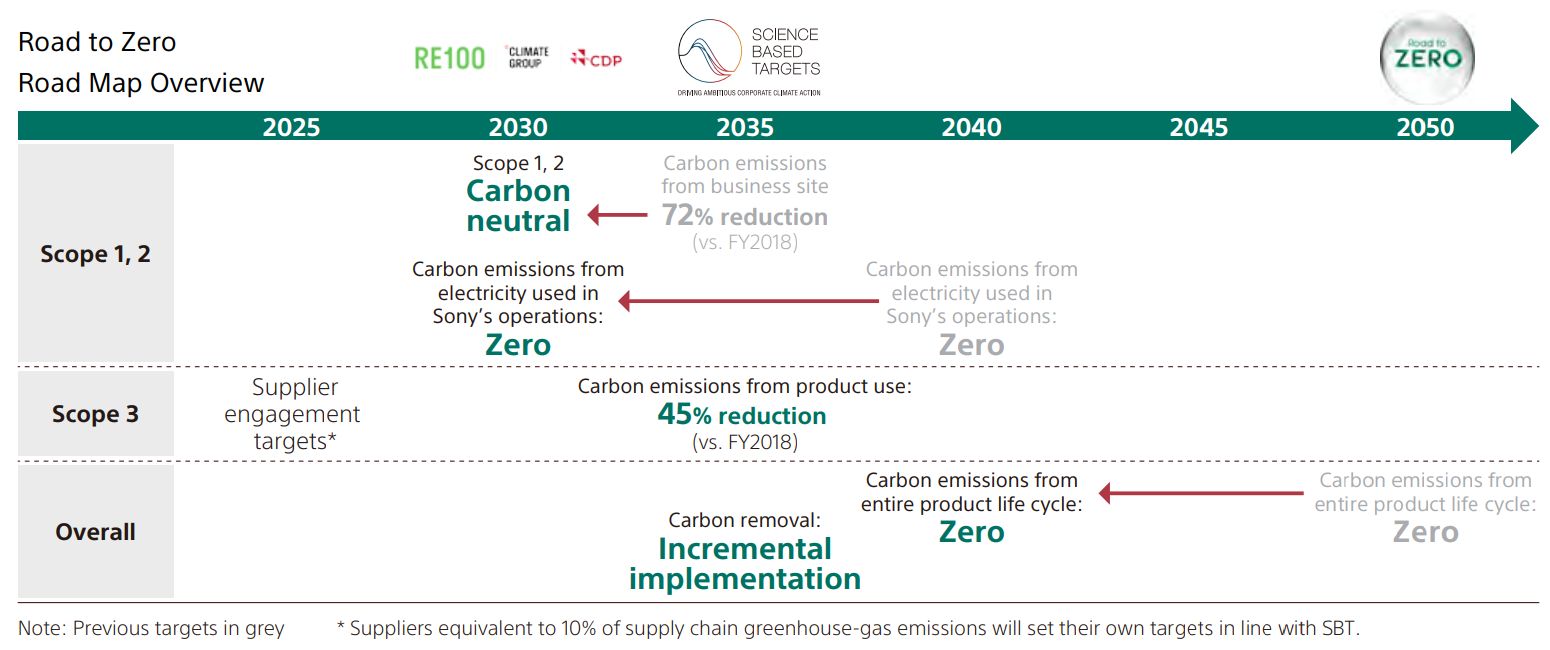
Although Sony isn’t nearly as ambitious in its timelines as Apple and Amazon, it seems like the entire company is committed to becoming sustainable. Sony engages not only its own employees and suppliers, but also leverages its reach to inspire its audience to take action. The company claims it has mobilized 2.3 billion people through events and social media to make sustainable lifestyle choices, participate in local cleanup events, and more.
Sustainable “business as usual” is an illusion
Now that you got a glimpse of four different sustainability reports, you may be wondering whether this is enough. It’s not.
Here’s what we think of the sustainability reports we reviewed:
- Apple is the most committed to sustainability and has made impressive progress.
- Sony has been reporting for the longest and has made credible efforts towards its “zero environmental footprint by 2040” goal since 2010, recently doubling down by accelerating its timeline by 10 years.
- Bose is the David among these Goliaths, and appears to be serious about re-aligning its sustainability commitments, but we won’t know for sure until new goals come in its next full report, which is due in 2023.
- Amazon has made bold commitments and is building leverage, but it may not have made significant progress yet.
None of these businesses are environmentally sustainable yet. As long as they build products that aren’t easy to repair or recycle and promote short product life cycles, such as a new pair of earbuds every couple of years, they will contribute to an unsustainable mindset. As do we, when we buy into the idea that we always need the latest gadget.
Despite accelerating its road map, Sony will likely miss the necessary net-zero carbon emissions target by roughly 10 years, Amazon may also be 10 years too late, and Bose hasn’t set any relevant targets yet. While Apple is on route to net-zero carbon impact by 2030, it will rely on massive carbon offsetting.

Carbon offsetting is an accepted practice, but its supply is limited, meaning it’s not enough to get us to net-zero—let alone negative carbon emissions. Hence, all our hopes for avoiding disastrous climate change hinge on half-committed governments, revenue-driven businesses, and unestablished technology that we need to massively scale up by 2030. At least the world’s biggest company appears to be fully committed. Maybe that 43.3% gross margin is well-invested after all?